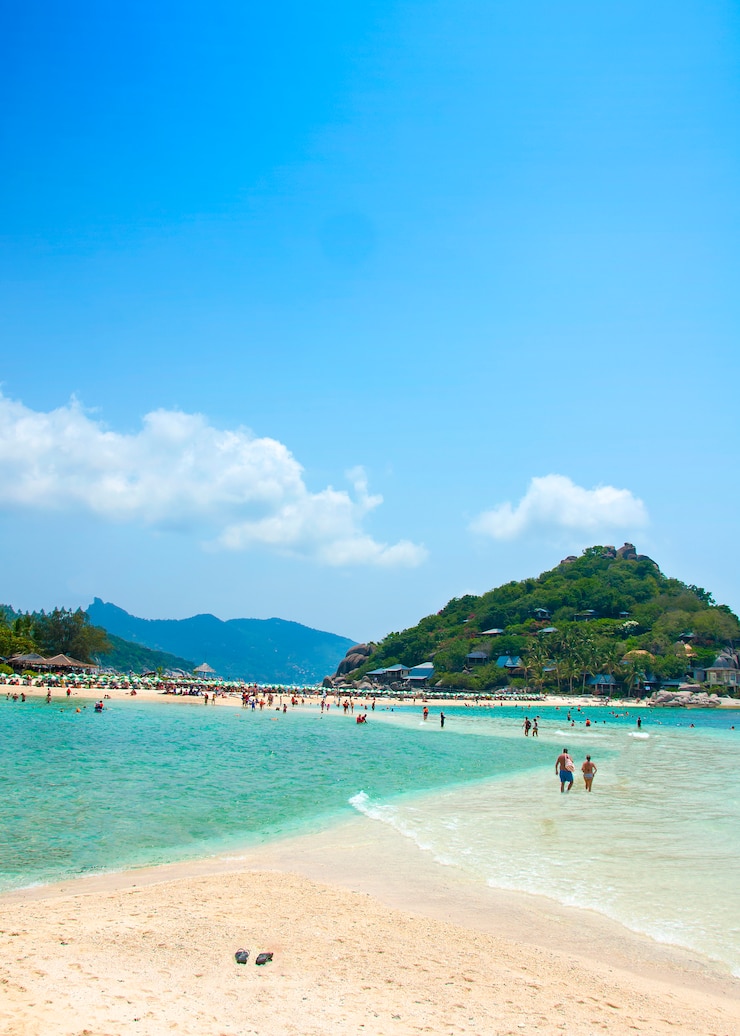
Congaree National Park, a 30-minute drive from downtown Columbia, South Carolina, spans 26,276 acres and offers year-round adventures for hikers, paddlers, anglers, and campers. This picturesque park, known for its lush forest and flowing rivers, boasts the world’s largest concentration of champion trees, including a towering 167-foot loblolly pine and ancient 500-year-old cypress trees. With 25 miles of hiking trails, a 2.4-mile boardwalk, and a variety of mammals, reptiles, birds, turtles, deer, and barred owls, it is also among the most dog-friendly parks in the country.
While you can explore the park’s extensive old-growth hardwood forest and wetlands any time of the year, the best season to visit is fall. During this time, the vibrant fall foliage is at its peak, rainy days are fewer, water levels are perfect for paddling and fishing, and the summer heat and bugs start to wane. Spring is another fantastic time to visit, with blooming wildflowers, comfortable temperatures, and reduced risk of winter flooding. Summer sees the most visitors, but temperatures can reach the upper 90s F, and humidity and mosquitoes can be intense. The park is quieter in winter, though many trails may be flooded unpredictably. Whether you plan to kayak the marshlands, fish for striped bass, or hike through ancient forests, this guide will help you plan your visit.
Congaree has a subtropical climate, characterized by mild winters and hot, wet summers. Since 80% of the park is within the Congaree River’s floodplain, trails and other areas can become suddenly inaccessible, especially in winter. Check the park’s website for current trail conditions and come prepared with the right wet-weather gear. In the warmer months, insects are prevalent, so be sure to use and generously re-apply insect repellent. The summer heat is particularly intense in July and August, often exceeding 100 F when factoring in the heat index.
Summer is the park’s busiest season, with high temperatures and humidity. If you visit then, plan to arrive early to find parking and beat the crowds as well as the heat. March through May is one of the nicest times to visit, with warm temperatures and blooming flowers such as camellias, Carolina jessamine, and dogwoods. Daytime highs usually reach the mid to upper 70s F, and the humidity is less oppressive than in summer, with fewer insects. Average spring rainfall is around three inches per month, so prepare with suitable clothing and footwear. Always check for trail flooding on the park website, and dress in layers for early morning or late evening excursions.
For stunning spring views, try the 4.5-mile Weston Lake Loop Trail, which features scenic boardwalks, Cedar Creek, Weston Lake, grasslands, and the park’s famous tree canopy, composed of over 75 native species. Notable sights include the nearly 170-foot-tall national champion loblolly pine at Big Tupelo Gut and wildlife like beavers at Weston Lake Slough, otters and wading birds at Cedar Creek, and wood ducks, feral hogs, and red-shouldered hawks along the route. The 1.8-mile Firefly Trail is also a spring highlight, beautifully illuminated by fireflies at dawn and dusk.
From June to August, the park experiences its hottest days, with temperatures commonly reaching the upper 90s F and occasionally topping 100 F. High humidity can push the heat index up to 110 F. Rainfall is most frequent during this season, averaging 4.5 inches per month, with frequent thunderstorms. Bugs, ticks, and mosquitoes are abundant, so bug repellent is essential. The forest’s shade offers some relief, but it’s best to visit early in the morning to avoid both crowds and the peak heat. Don’t forget ample water and sunscreen.
Fall is the ideal time to visit Congaree. While September can be warm, October and November typically see temperatures in the 70s F with reduced humidity. The fall colors reach their zenith between late October and early November, making it a perfect time to explore the 6.3-mile Oakridge Trail or the accessible 2.6-mile Boardwalk Loop Trail, which features majestic old-growth oak, tupelo, maple, and bald cypress trees. With average monthly rainfall around three inches, water levels are perfect for paddling on Cedar Creek and exploring other waterways. It’s also a favorable time for camping at Longleaf Campground, though reservations should be booked in advance via Recreation.gov or by calling 1-877-444-6777. Backcountry campsites are available with permits from the park visitor center.
The winter months, December through February, are mild, with daytime highs around 50s F. Night temperatures can drop below freezing, so come prepared if camping. Snow is rare, but flooding is common and can obscure trails unexpectedly. Hikers and campers should bring appropriate gear and check trail conditions before heading out. Since cell service is limited in the park, it’s wise to carry a map or preload directions on your phone.


